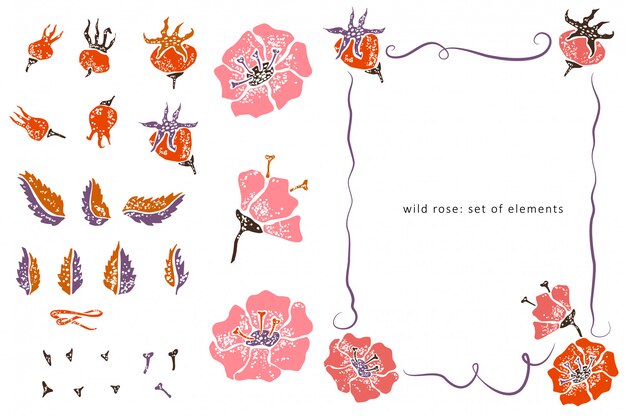Beautiful Flowers in Japan and Their Meanings
The Most Beautiful Flowers in Japan: An Exploration of Enchanting Blooms and Their Meanings
In Japan, flowers are more than mere decorations; they embody emotions and cultural narratives that resonate deeply within society. Each bloom conveys a unique message, often linked to significant life events and sentiments. This exploration introduces some of Japan’s most beautiful flowers, revealing their meanings and the roles they play in Japanese culture.
- Tsubaki: Divine love and spring’s arrival.
- Ume: Perseverance and elegance.
- Kiku: Longevity and nobility.
- Hydrangea: Emotions and gratitude.
- Himawari: Adoration and loyalty.
- Fuji: Love and support.
- Ayame: Good news and victory.
- Higanbana: Autumn and memories.
- Botan: Good fortune and romance.
- Sakura: Renewal and innocence.
Tsubaki: The Camellia’s Message of Love
Tsubaki, or camellia, is a flower that heralds the arrival of spring in Japan. Known for its vibrant blooms, it symbolizes divine love, deep desire, and perfection. Often gifted to express admiration, Tsubaki’s beauty captures the essence of romantic affection. Its significance in Japanese culture is profound, making it a popular choice during special occasions, including weddings and anniversaries.
Ume: The Resilient Plum Blossom
Ume, or plum blossoms, are cherished for their delicate beauty and resilience. These flowers bloom in late winter, symbolizing the transition from winter to spring. In the language of flowers, ume conveys elegance, faithfulness, and a pure heart. They are often celebrated during the Ume Matsuri (Plum Blossom Festival), where people gather to appreciate their fleeting beauty and the promise of warmer days ahead.
Kiku: The Chrysanthemum’s Noble Presence
Kiku, or chrysanthemums, hold a special place in Japanese art and culture. Emblematic of longevity and rejuvenation, they are often associated with nobility and honor. The flower language of kiku encompasses themes of long life and recovery from adversity. In Japan, chrysanthemums are celebrated during the annual Chrysanthemum Festival, where various varieties are showcased, reflecting their significance in both history and society.
Hydrangea: The Symbol of Emotions
Hydrangeas are known for their vibrant colors and unique ability to change hues based on soil conditions. This quality symbolizes understanding and patient love, making them a popular choice for expressing heartfelt emotions and apologies. In Japan, these blooms often appear in gardens and are celebrated during the rainy season, serving as a reminder of the beauty that can emerge from adversity.
Himawari: The Cheerful Sunflower
Himawari, or sunflowers, are vibrant and energetic blooms that symbolize adoration and loyalty. Their bright yellow petals evoke feelings of happiness and warmth. In the language of flowers, himawari represents admiration, dreams, and lasting joy. They are commonly associated with summer festivals and are often used in decorations to celebrate life’s joyful moments.
Fuji: The Wisteria’s Romantic Essence
Fuji, or wisteria, is renowned for its cascading bluish-purple flowers that create stunning displays in gardens and parks. This flower symbolizes love, support, and the passage of time. In Japanese culture, wisteria represents gentle strength and passionate love, often appearing in art and literature. The Wisteria Festival, held annually, attracts visitors who come to admire its breathtaking beauty and fragrant allure.
Ayame: The Iris’s Symbol of Victory
Ayame, or iris, is celebrated for its striking appearance, characterized by sword-like leaves and vibrant flowers. This bloom is a symbol of good news and victory in Japanese culture. In the language of flowers, ayame signifies courage and admiration, often given as a compliment to one’s beauty. During the iris season, many Japanese gardens feature these flowers prominently, showcasing their elegance and significance.
Higanbana: The Red Spider Lily’s Profound Meaning
Higanbana, or red spider lily, is often associated with the afterlife and is revered in Buddhist traditions. This flower signifies the arrival of autumn and is linked to themes of loss, abandonment, and memories of the departed. Higanbana blooms in late summer, creating a poignant reminder of the transient nature of life. Its striking red color and unique shape make it a memorable sight in gardens and natural landscapes.
Botan: The Peony’s Celebration of Fortune
Botan, or peonies, are regarded as symbols of good fortune and bravery. With their lush, full-bodied petals, they represent romance, prosperity, and honor in the flower language. Botan is often used in important celebrations, such as weddings and New Year festivities, reflecting their association with happiness and blessings. Their rich colors and fragrances make them a beloved choice for floral arrangements throughout Japan.
Sakura: The Cherry Blossom’s Ephemeral Beauty
Sakura, or cherry blossoms, are perhaps the most iconic of Japan’s flowers, symbolizing the ephemeral nature of life. Their short blooming period signifies renewal and the beginning of spring, as well as noble sacrifice. In Japanese culture, sakura represents simplicity, innocence, and the beauty of fleeting moments. Hanami, the cherry blossom viewing festival, attracts millions each year, as people gather to celebrate the blossoms’ breathtaking beauty and the promise of new beginnings.
The Cultural Significance of Flowers in Japan
The profound connection between the Japanese people and their native flowers paints a vivid picture of the country’s cultural richness. Each flower carries unique symbolism and a language that reflects the ethos of Japanese society. From expressions of love and admiration to themes of resilience and renewal, flowers play an integral role in the traditions and celebrations of Japan.
Reader Q&A
What is the significance of the cherry blossom in Japan?
The cherry blossom, or sakura, symbolizes the transient beauty of life and the arrival of spring. Its short blooming period is celebrated during Hanami, where people gather to appreciate its beauty.
How do flowers influence Japanese culture?
Flowers in Japan convey emotions and messages, playing a significant role in various ceremonies, festivals, and daily life. Each bloom carries specific meanings that reflect societal values and sentiments.
What flowers are commonly used in Japanese celebrations?
Commonly used flowers in Japanese celebrations include kiku (chrysanthemums), botan (peonies), and ume (plum blossoms), each symbolizing different virtues such as longevity, good fortune, and perseverance.

